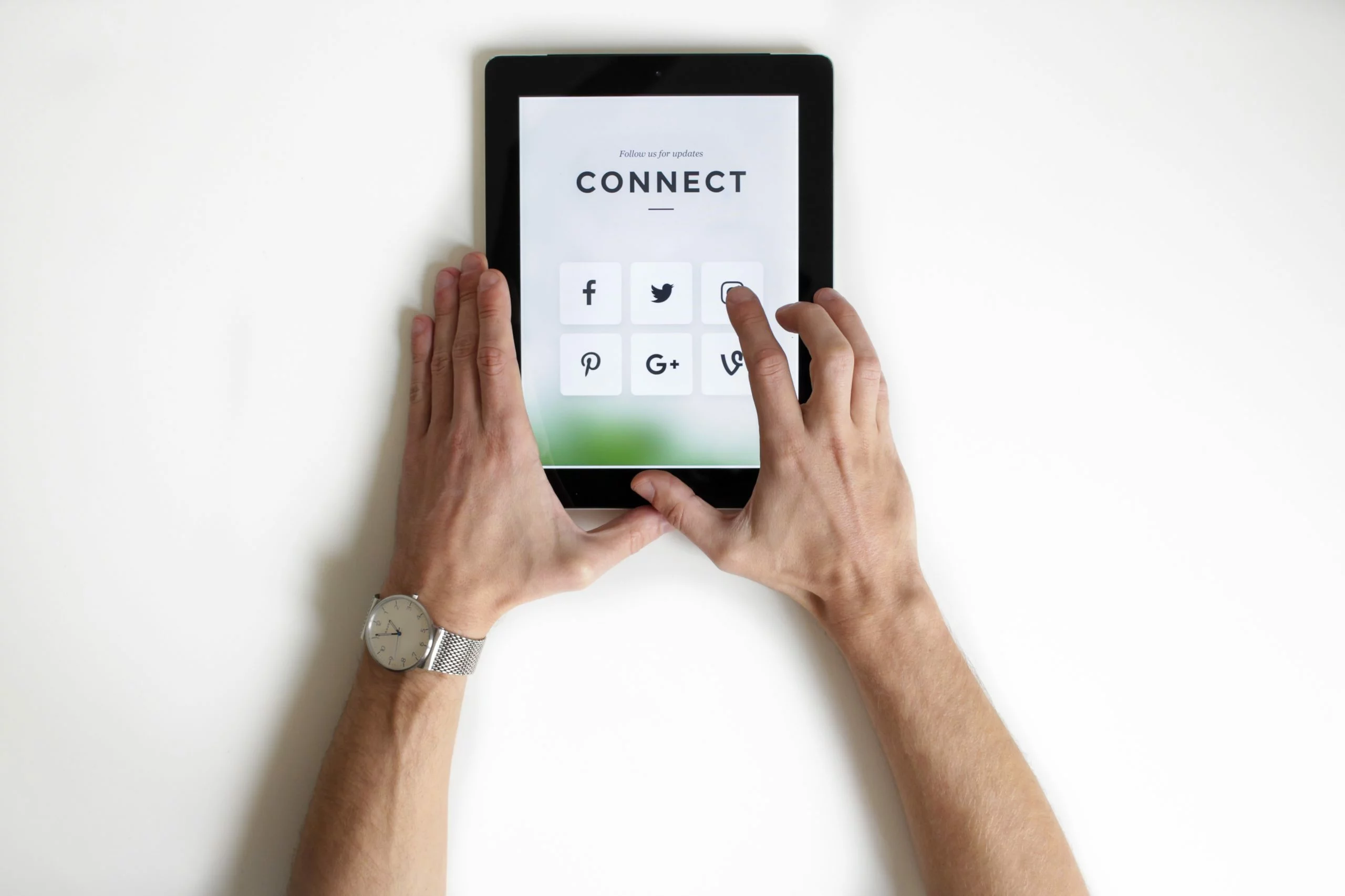The marketing of the future leaves it up to the users to decide whether they want to be kept up to date or not.
The concept of permission marketing is more relevant today than ever before – and it’s not new at all. That’s because about 20 years ago, American marketing guru Seth Godin coined the term permission marketing in his best-selling book of the same name:
Permission-based marketing is the privilege (not the right) to send expected, personalized, and relevant advertising to people who want to receive it.”
Permission marketing has since often been equated with email newsletter marketing; after all, by law, promotional emails require prior consent from recipients via double opt-in.
Newer permission marketing channels like push notifications not only require consent, but even exclude spam altogether by letting the browser or operating system dictate the sign-in and sign-out process.
Similarly, with online services like Facebook, Instagram, and Twitter, the platforms manage users’ subscribing and unfollowing. Thus, on the one hand, they belong to the permission marketing channels, but on the other hand, they also offer unsolicited advertising opportunities.
However, the idea of permission marketing goes far beyond the mere issue of consent. So promises Seth Godin in the subtitle of his aforementioned book on permission marketing:
How to Turn Strangers into Friends and Friends into Loyal Customers.”
The aim is thus to place customer loyalty and customer value at the center of marketing activities. The company must “earn” it, so to speak, to be allowed to stay in contact with the customer or prospective customre. This is because customers are increasingly deciding which content they want to receive from which channels. They can also easily “opt out” again at any time. But provided with valuable content, users not only stick around, but feel a sense of belonging and intense connection.
Why is Permission Marketing (again) so topical?
Companies have to fight an ever-growing flood of advertising, walled-garden platforms, and tracking protection. Although the possibilities of programmatic advertising have succeeded in reducing the wastage of unsolicited advertising, advertising is nevertheless losing its impact. It is becoming increasingly difficult to attract and hold the attention of users or even activate them to click or buy. Moreover, we are becoming more and more dull in the face of the abundance of offers, novelties and deals.
Programmatic advertising is also coming under pressure from legal and browser restrictions. If regulators get serious and pursue the informed, active, voluntary cookie consent requirement as announced, it will have as massive an impact as Apple’s and Mozilla’s continually tightening Intelligent Tracking Protection.

Permission marketing offers a way out, which is not affected by ad blocking or ad fraud, nor by cookie deletion. It addresses recipients who are really interested in your product or service. With permission-based marketing, the chances of success are thus generally higher than with public advertising, because the messages have been requested and the recipient is expecting them.
Changed private communication changes marketing communication
Messengers like Whatsapp and services like Facebook, Instagram and Snapchat have noticeably changed private communication. Smaller “communication tidbits” are in demand, but with greater frequency. Moreover, the newer permission marketing channels blend private exchanges with professional marketing communications. This opens up the opportunity for more intensive customer and prospect retention through more frequent and modern approaches.
Everyone is vying for attention on this virtual stage. This also increases the demands on marketing communication: it should appeal, inspire, involve and create an emotional connection.

Best-practices for Successful Permission Marketing
Self-determination
Self-determination includes allowing users to choose their preferred channel. Companies are finding that when e-mail newsletters and news via Web Push are offered in parallel, there is hardly any cannibalization, but rather additional subscribers are gained. Therefore, it is recommended not to be active on only one platform or channel, but to cover all relevant platforms and channels.
The permission-based marketing approach also aims to obtain the user’s opt-in before addressing them directly. In addition, it can also be helpful to let users decide for themselves when “subscribing” to which topics or occasions they would like to receive information and not just to accept this on the basis of tracked behavior This is particularly important when a very colorful or heterogeneous bouquet of offers is provided, so that the subsequent relevance of the messages for the user can increase his motivation to consent.
Directness
It’s great when you make it into your users’ Instagram feed, for example. But it is dangerous to be entirely dependent on the networks’ conditions and algorithms when it comes to accessing your own users. Therefore, the principle of “owned media first” applies to content distribution and remarketing.
But even within their own channels, there are once again serious differences in terms of the directness of delivery. It is well known that e-mails first have to attract attention in the user’s inbox by means of a concise subject. It becomes especially difficult when the messages are sorted by Google in the “Advertising” tab. In contrast, push notifications from the browser, app or wallet card appear directly on the user’s screen and do not have to be opened by them first. This automatically increases the click-through rate enormously.
Personalisation
With permission marketing, you target someone who has an obvious interest in your product or service. Thus, a high relevance of your news is already given per se. Personalized content that matches the current position within the customer journey or interests and preferences is particularly attractive. With a personalized approach, you can prevent negative experiences, for example, when a recently purchased item is now advertised at a special price. On the other hand, personalization can particularly increase the user value, for example, by sending offers and tips that match the articles that have just been viewed or purchased.
In the networks, personalization can at best be based on the profile data available there; in the company’s own channels, on the other hand, the company’s own CRM and tracking come into play as data sources or triggers. This is where marketing automation solutions that offer extensive integrated tracking for segmenting and triggering campaign workflows offer a distinct advantage and multiple opportunities.
Creativity
Experimentation is needed in both opt-in invitation design and messaging. Opt-ins come in a wide range of forms, from direct full-screen pop-ups at the start of a visit to the website to more or less hidden channel icons in the footer.
Variety is also required in terms of occasions and content. It’s not just about bargains, but also entertainment, a look behind the scenes and much more. Maybe World Noodle Day or World Niceness Day is news worthy for you too?
Likewise, successful personalization and automation require creativity and iterative groping and trial and error. Connected extensive tracking makes the optimization much easier, because not every change of the set of rules has to be accompanied by interventions in the website.
Advantages of Permission Marketing
Permission marketing brings many benefits to both your users and you as a provider:
Increase in success
An opt-in is only given to selected providers. With permission marketing, you will never reach all your users. But you will reach those who explicitly want to do so. This automatically increases engagement and conversion rates.
Cost reduction
Desired ads are much less likely to be blocked or ignored. In addition, there is no wastage, nor are you dependent on the algorithms and cost models of the platforms. . It is usually more independent and cheaper to send messages through your own channels. And: Retaining customers is many times cheaper than acquiring new ones.
Strong customer retention
With permission marketing, you can drive your content distribution and bring users back to your website. In particular, permission-based marketing gives you the chance to build a lasting bond with your users. The new push notification channels are great for increasing the number of touchpoints and also for spreading smaller news.
Legal security
With consent, you avoid many data protection problems. Push notifications make it even more secure as they don’t require any personal data.
As a user, I also benefit from permission marketing:
- I save visiting the website, creating news feeds or the like to get news automatically.
- I no longer miss out on offers and receive exclusive benefits many times over.
- I am valued as a loyal regular customer.
- I can determine from whom I receive (advertising) messages and from whom not.
Conclusion: your users get what they want and you benefit from long-term, high-quality customer relationships.





